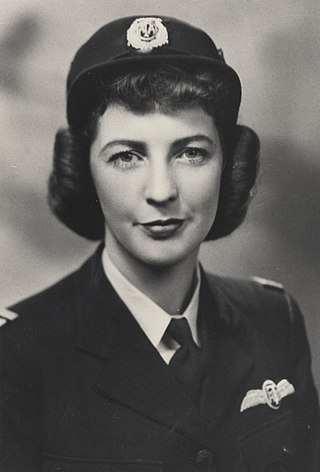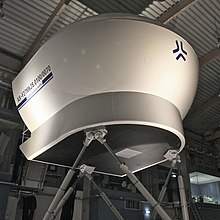
An aircraft pilot or aviator is a person who controls the flight of an aircraft by operating its directional flight controls. Some other aircrew members, such as navigators or flight engineers, are also considered aviators because they are involved in operating the aircraft's navigation and engine systems. Other aircrew members, such as drone operators, flight attendants, mechanics and ground crew, are not classified as aviators.

A private pilot licence (PPL) or private pilot certificate is a type of pilot licence that allows the holder to act as pilot in command of an aircraft privately. The basic licence requirements are determined by the International Civil Aviation Organization (ICAO), but implementation varies from country to country. According to ICAO, an applicant must be at least 17 years old, demonstrate appropriate knowledge and skill, and hold at least a Class 2 medical certificate. Different PPLs are available for different categories of aircraft, such as aeroplane, helicopter, airship, etc, and are not interchangeable, although experience from a PPL in one category may be credited towards the issue of another.
The airline transport pilot licence (ATPL), or in the United States of America, an airline transport pilot (ATP) certificate, is the highest level of aircraft pilot certificate.
A commercial pilot licence (CPL) is a type of pilot licence that permits the holder to act as a pilot of an aircraft and be paid for their work.
The Glider Pilot, Liaison Pilot, and Service Pilot badges were qualification badges of the United States Army Air Forces issued during the years of World War II to identify a rating in one of three specialized, limited-duty pilot categories whose selection and training differed from that of the traditional military pilot.
In the United States, a student pilot certificate is issued to a pilot in training, and is a prerequisite for the student to fly alone in the aircraft.
Pilot licensing or certification refers to permits for operating aircraft. Flight crew licences are issued by the civil aviation authority of each country, which must establish that the holder has met minimum knowledge and experience before issuing licences. The licence, along with the required class or type rating, allows a pilot to fly aircraft registered in the licence issuing state.

Pilot certification in the United States is typically required for an individual to act as a pilot-in-command of an aircraft. It is regulated by the Federal Aviation Administration (FAA), a branch of the U.S. Department of Transportation (USDOT). A pilot may be certified under 14 Code of Federal Regulations (CFR) Part 61 or 14 CFR Part 141. Pilots may also be certified under 14 CFR Part 107 for commercial drone operations.

Pilot licensing in Canada is administered by Transport Canada under the Aeronautics Act and the Canadian Aviation Regulations (CARs).
Pilot licensing in the United Kingdom is regulated by the Civil Aviation Authority (CAA).
An instrument rating is an authorization required for a pilot to fly under instrument flight rules (IFR). In the United States, the rating is issued by the Federal Aviation Administration.

A flight instructor is a person who teaches others to operate aircraft. Specific privileges granted to holders of a flight instructor qualification vary from country to country, but very generally, a flight instructor serves to enhance or evaluate the knowledge and skill level of an aviator in pursuit of a higher pilot's license, certificate or rating.

The Canadian Aviation Regulations define two types of ultralight aircraft: basic ultra-light aeroplane (BULA), and advanced ultra-light aeroplane (AULA).
A Qualified Flying Instructor is someone who is qualified to conduct flight training for pilots. They may also have other roles in aviation, such as aircraft certification and flight reviews, depending on the jurisdiction. Every country has its own rules and regulations as regards the qualification process. Below are some examples.

Helen Marcelle Harrison Bristol was a pioneering Canadian female civil aviation instructor and the first Canadian Air Transport Auxiliary ferry pilot during World War II.
In Australia, pilot licences are issued by the Civil Aviation Safety Authority. Licences are issued for different categories of aircraft, including aeroplanes and helicopters.
The National Private Pilot Licence (NPPL) is a licence to fly United Kingdom registered aircraft within the United Kingdom. It is a more basic licence than the private pilot licence (PPL), and cannot be used to fly all aircraft. It can be used to fly basic aircraft such as vintage aircraft or kit-built aircraft. To fly many basic aircraft such as the Cessna 172, it is necessary to upgrade to at minimum a light aircraft pilot licence (LAPL).
ATP Flight School is the largest flight training company in the United States. The curriculum focuses on airline-oriented pilot programs at locations across the country. ATP is the leading supplier of professionally trained pilots to the nation's regional airlines.
Moretta Fenton Beall "Molly" Reilly became the first female Canadian pilot to reach the rank of captain, the first female Canadian corporate pilot, and the first woman to fly to the Arctic professionally. Her modifications to the Beechcraft Duke were used to improve the aircraft. Over the course of her career, Reilly logged over 10,000 flight hours as a pilot-in-command — without a single accident. She is a member of the Canadian Aviation Hall of Fame.
Aviation in the European Union and the European Free Trade Association is regulated by the European Union Aviation Safety Agency (EASA). EASA specifies common standards for the licensing of aircraft pilots. EASA does not issue licences, rather licences are issued by member states. However, because the same standards are used, EASA licences are recognised by all member states.








